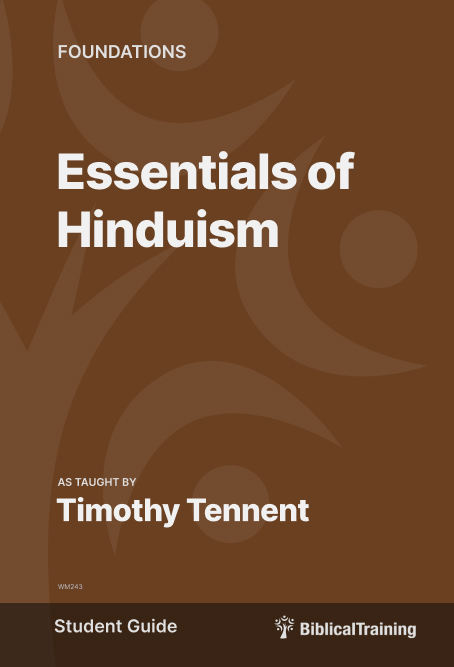Essentials of Hinduism
About This Class
This class provides a comprehensive overview of Hinduism, beginning with an introduction to its sacred texts and the ten themes of the Upanishads. It delves into the ten metaphors that shape Hinduism and its overall structure. The course also examines popular forms of Hinduism and their gods, offering resources for further exploration. Additionally, it covers four themes in the Devotional movement and concludes with a brief comparison of Hinduism and Christianity, referencing Dr. Tennent's tract that addresses common questions from Hindus about Christianity.
Recommended Reading:
Christianity at the Religious Roundtable: Evangelicalism in Conversation with Hinduism, Buddhism, and Islam, Timothy Tennent
Hinduism, the...
Timothy Tennent

Lessons
- 0% Complete
An introduction to Hinduism, discussion of their sacred texts, and the ten themes of the Upanishads.
0% Complete - 0% Complete
The ten metaphors of Hinduism and how Hinduism is structured overall.
0% Complete - 0% Complete
A look at the more popular forms of Hinduism. You can find images for each of the gods Dr. Tennent describes by downloading the, "Hindu Gods and Goddesses Images" file under the Downloads heading on the class page, or by searching the web using the name of the god, followed by the keywords, "hinduism images."
0% Complete - 0% Complete
Four themes in the Devotional movement
0% Complete - 0% Complete
A brief comparison of the beliefs and practices of Hinduism and Christianity. You can see the English translation of a tract that Dr. Tennent wrote using his Hindi pen name by clicking on the link, "Your Questions, Our Answers" under the Downloads heading on the class page. The tract identifies questions commonly asked by Hindus in India about Christianity and gives responses to each one.
0% Complete
Class Resources
Recommended Books
Essentials of Hinduism - Student Guide
This course serves as a summary of the beliefs and practices of Hinduism by Dr. Timothy Tennent. There are five messages that will introduce readers to a summary of the...
